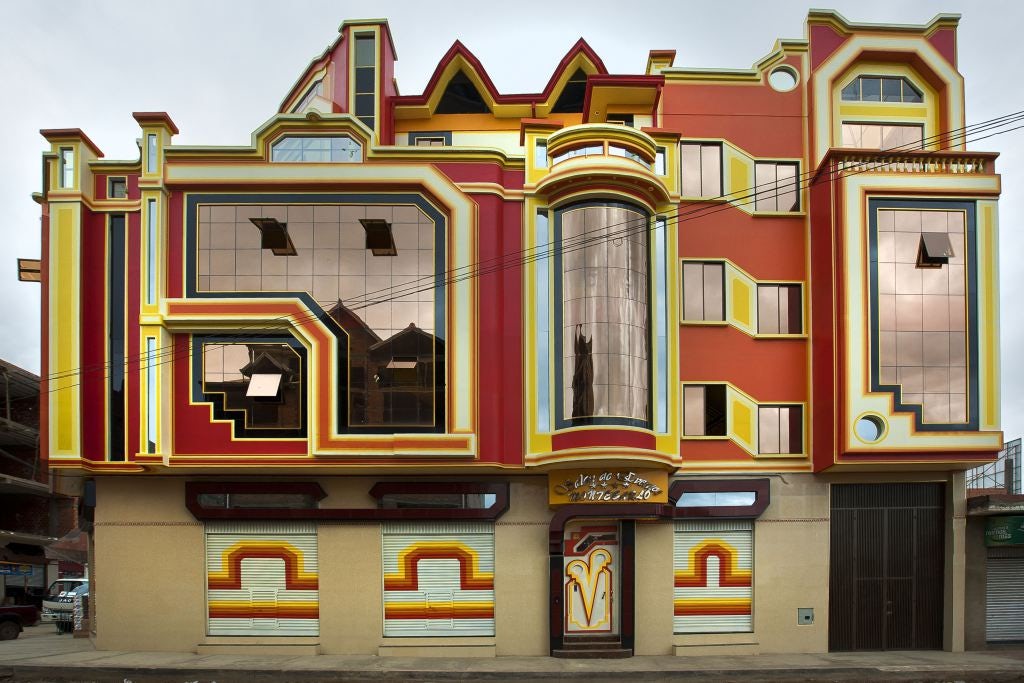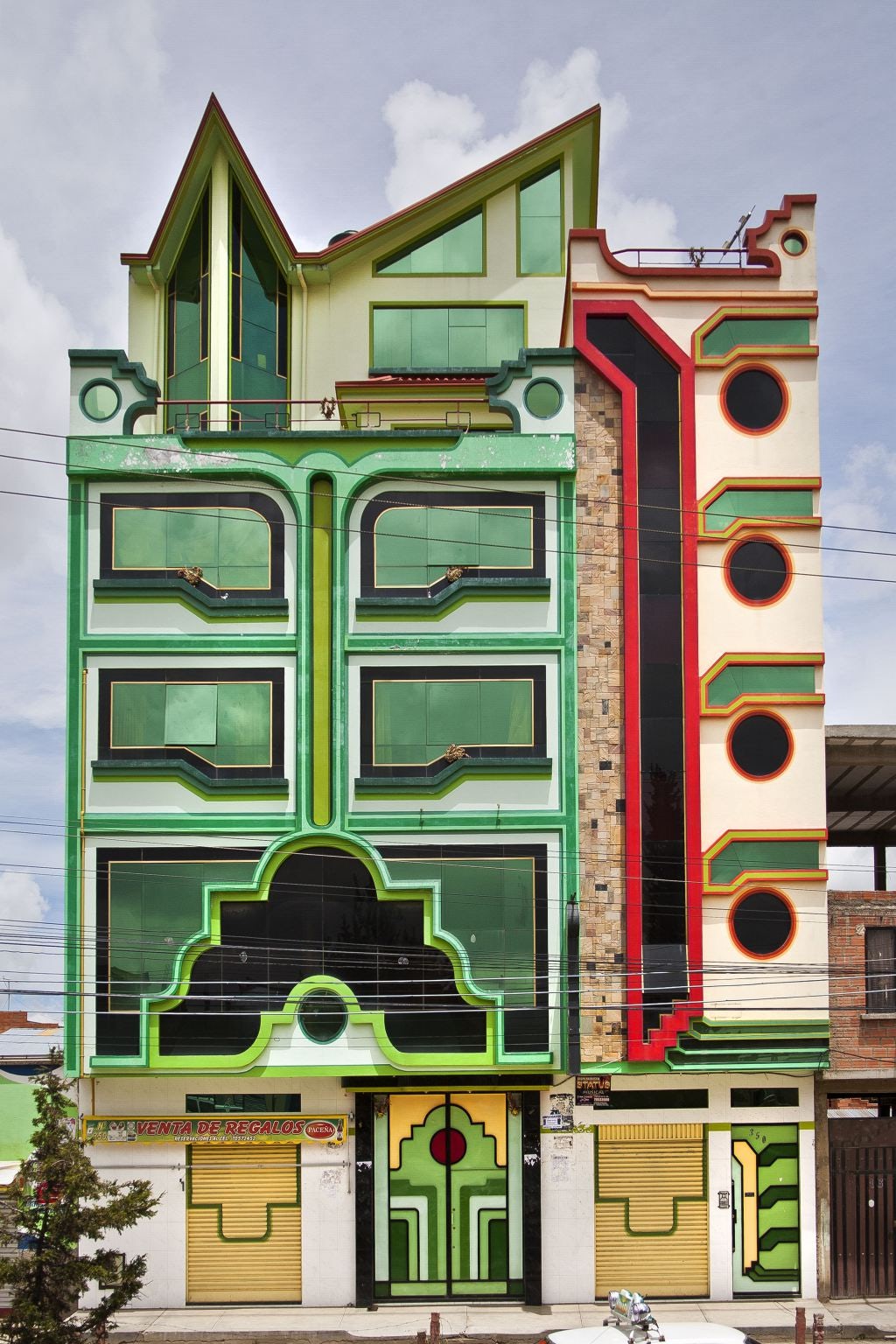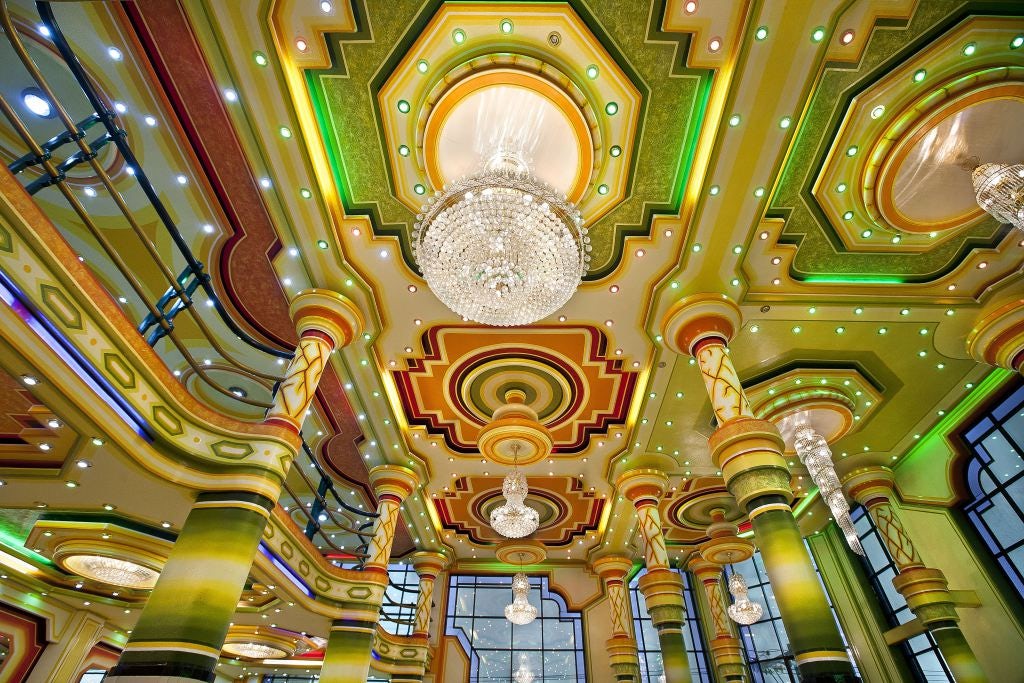There is much debate among architects and theorists about what exactly architecture can do as a political mechanism. Can it change the world? Or is it merely a manifestation of larger political, legal, and economic forces, played out in concrete and glass? Most of it is probably falls squarely in the latter category, but Bolivia’s latest architecture phenomenon, Freddy Mamani Silvestre, is definitely somewhere in between.
Mamani is known as the “King of Andean Architecture,” and he has built dozens of houses boasting bright colors and patterned motifs that originate in indigenous art and architecture. His architectural work in the fast-developing city of El Alto, just west of La Paz, Bolivia, in the high Andes, is one element of broader cultural changes that have happened in Bolivia since they elected indigenous president Evo Morales in 2006. The 36 indigenous cultures that represent almost 2/3 of the population are now becoming more prominent in Bolivia, and the wild so-called “spaceship architecture” is an easy symbol for the rise of these native peoples.


“With my architecture I want the world to know that Bolivia has its own identity,” Mamani told the BBC. “There have always been rich Aymaras,” he continues, referring to the indigenous group that makes up nearly 25% of the population. “The problem was they didn’t identify with it. Now, with this architecture they come to the fore saying, ‘We are Bolivians, we are Aymara and we can show off our Indigenous Bolivians’ new confidence and identity.'”


Some might call it “kitsch,” but Clement Greenberg, author of “Avant-garde and Kitsch” would say that is an intensely narrow-minded idea that Edward Said could write an entire essay [PDF] on. Kitsch is derived from consumerism, not indigenous culture. Just because it doesn’t fit into American or Western European mainstream notions of “good taste,” doesn’t make it kitsch. The political aesthetics of the representation of indigenous people in the making of the image of public urban space couldn’t be any less kitsch. Mamani’s important works have attracted media attention from all over the world, including an exhibition at the Architectural Association in London and the above documentary by United Notions Film.




